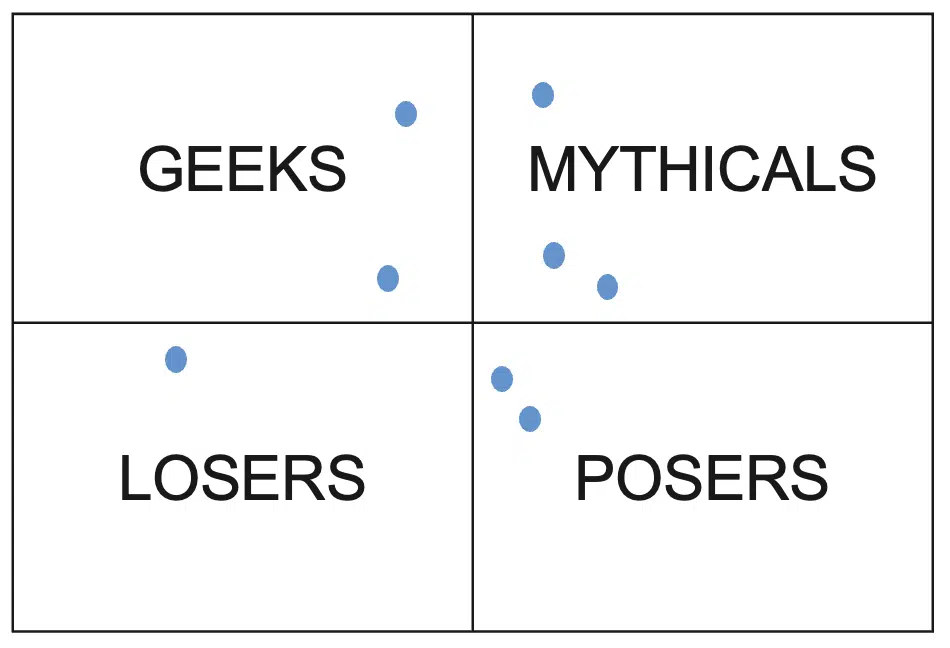You don’t should look far within the martech world to search out breathless case research about profitable system deployments and extraordinary ROI. However what’s not so nicely shared are the failed or incomplete implementations, the groups struggling to get full leverage out of present toolsets and the stack leaders wrestling with troublesome vendor relationships.
In my expertise, these quiet struggles are extra frequent than success tales. A few of these issues originate at program inception when distributors perpetrate, or enterprise martech leaders fall sufferer to pervasive myths about how martech actually works.
In recent times, I’ve discovered the next half-dozen myths to be significantly widespread. Forewarned is forearmed!
My life as a mythbuster
I first entered the analyst enterprise, founding “CMS Watch” in 2001 due to some trade quadrants from main analyst corporations. These quadrants confirmed a bevy of “main” or “magical” CMS distributors and platforms that I had deep reservations about based mostly on my expertise main a improvement crew that truly applied these methods.
So I made a decision to begin a brand new type of analyst agency that might bust myths and inform the actual story about how these applied sciences work. Quick ahead two-plus many years and lots of myths persist. So let’s carry on busting!

Fantasy 1: Static quadrants are significant
Individuals love quadrants! And you may see why since they simplify marketplaces into winners and losers. However there are two key myths right here:
- {That a} single static quadrant is universally relevant throughout use circumstances, firm dimension, area and enterprise priorities.
- That main analyst corporations weigh the correct elements in positioning distributors.
Neither is true.
You don’t wish to align with what somebody labels as generically the “finest” distributors. You wish to companion with the best-fitting distributors and this may at all times be a contextual consideration. A martech vendor that matches one other agency in your trade might not match nicely for you, particularly in the event you’re seeking to compete on expertise (amongst different issues). You must typically undertake any vendor prioritization based mostly in your particular use circumstances.
The opposite drawback with static quadrants is that traditionally, they’ve tended to chubby trade laggards, typically bigger distributors with sizable put in bases, who usually excel at “analyst relations,” however too often underperform at consumer relations.
Fantasy 2: A martech suite vendor is your ally
And talking of underperforming — among the largest title distributors within the martech trade have left among the largest handprints on these failures I discussed within the opening paragraph above. As purveyors of multi-platform “suites,” they may attempt to persuade your anxious executives that you could keep away from the persistent and thorny challenges of platform integration by buying as a lot of your stack from a single vendor.
The actual story is that main martech vendor suites have been cobbled collectively through random acquisitions and their particular person items goal a complicated number of completely different enterprise buyer profiles. So they’re coherent in title solely. That’s why giant martech distributors will at all times want to steer on the C-level relatively than at working ranges in your agency to keep away from having to really show platform match and high quality.
You don’t should put up with this. At all times carry out rigorous, aggressive testing in opposition to vital use circumstances. And by no means enable your agency to get bullied.
Fantasy 3: You should at all times personalize
Business pundits have prioritized digital and buyer expertise personalization as a “must-have” for the previous quarter-century. And but, for many channels in most enterprises, personalization stays a distant objective. What’s occurring right here?
A part of the problem is that personalization can show expensive — from operational, compliance, efficiency and reporting views. That doesn’t imply you shouldn’t discover the worth of customized experiences. It does imply you must think about ROI very rigorously and acknowledge that putative worth might not at all times exceed value and energy.
We just lately thought-about this query at Actual Story Group’s MarTech Management Council and concluded that personalization program outcomes often assorted by channel and name to motion. For instance, electronic mail and ecommerce personalization tended to yield increased ROI than web site personalization, which generally exhibited even unfavorable returns.
I assume this all goes again to the fundamentals: present what your clients really need, not what you assume they need.
Fantasy 4: A CDP will repair your buyer information mess
Even because the buyer information platform (CDP) market matures, I typically see enterprises seeking to a CDP implementation as a savior. You’ll be able to perceive why. Most enterprise buyer information is so tousled that it’s not unreasonable to hunt a kind of divine intervention — or at the least a shortcut.
However there are not any shortcuts. Rubbish-in, garbage-out applies to buyer information as a lot as some other. Most enterprises should handle foundational problems with complete information assortment, cleansing, governance, processing, id decision and correct attribute modeling earlier than they’ll even consider successfully activating all that candy information. A CDP alone is not going to remedy all these challenges.
To make certain, some CDP distributors provide foundational information processing providers as a part of their platform. Our current analysis suggests that you could roughly bifurcate the CDP market into options focusing totally on enterprise buyer information operations versus these emphasizing information activation. However even within the former case, somebody has to do all that troublesome information processing work. Fixing your buyer information mess is on you, maybe with outdoors assist.
Fantasy 5: AI will change most entrepreneurs
The subject of AI has yielded too many keystrokes already — both generated by people or machines. However like all main martech subject, myths nonetheless abound right here. Maybe the largest fable is that AI will change most entrepreneurs or maybe change the advertising and marketing perform altogether.
AI will change repetitive work and manufacturing duties within the advertising and marketing ecosystem. AI is not going to change the inventive spark, the important instinct and the innate want for actual, genuine, bi-directional human interplay. For martech leaders such as you, I don’t worry that you’ll leverage AI too little, however relatively that distributors will flood your stack with untested and probably unethical algorithms that they swiftly embedded into all of your platforms.
We’re following this phenomenon carefully and may have extra to say on it within the coming quarters, however within the meantime, take a wholesome pause and keep in mind the distinctive expertise that you simply and your crew convey to the desk. Then take a look at any AI modules rigorously, search for complete transparency below the covers — although you’ll hardly ever discover it! — and don’t settle for shoddy outcomes.
Fantasy 6: ‘We’re behind!’
Talking of AI, I discover a persistent impression amongst enterprise martech leaders that they — and their organizations — are one way or the other “behind the pack.” You’ll be able to perceive why an observant chief may imagine their operation lags the pack in a world of breathless (however hardly ever repeatable) case research and snazzy vendor bulletins.
I’d say that is the topic of, or at the least subtext to, 90% of the advisory calls I subject from martech leaders of huge enterprises.
However right here’s the factor: by definition, 90% of you can’t be behind. Sure, martech is transferring rapidly, however your friends are scuffling with this evolution, too. We see fewer repeatable design patterns than we’d like at this part. This implies that for a lot of applied sciences — particularly AI and ML — it’s nonetheless early days.
The issue with feeling chronically behind is that your selections can grow to be haphazard and topic to vendor manipulation. As an alternative, you wish to construct a sturdy, layered martech stack whose robust underlying pillars let you experiment and innovate on the customer-facing tier. So take a deep breath, solidify your martech foundations and press ahead.
Get MarTech! Every day. Free. In your inbox.
Opinions expressed on this article are these of the visitor writer and never essentially MarTech. Workers authors are listed right here.

